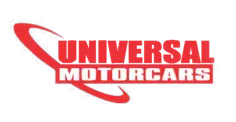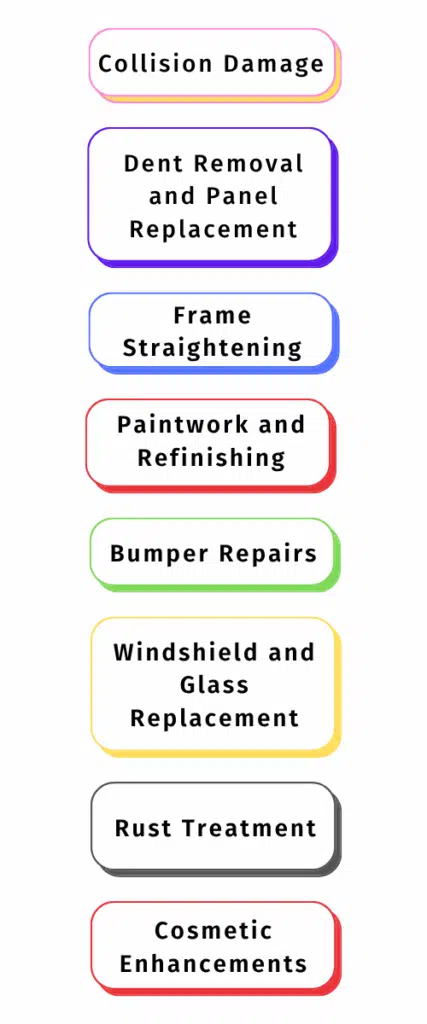When a vehicle needs repair, one of the most common points of confusion for car owners is understanding whether the issue requires an autobody repair shop or a mechanic repair shop. Although both deal with vehicles, the type of work, tools, expertise, and repair goals differ significantly between the two. Knowing which shop to visit can save time, prevent unnecessary expenses, and ensure the vehicle receives the proper care.
This blog provides a clear breakdown of how autobody repair shops differ from mechanic repair shops, what each specializes in, and when a driver should choose one over the other.
Purpose of Each Shop
Autobody Repair Shop
An autobody repair shop focuses on restoring the exterior of a vehicle after damage caused by collisions, accidents, weather elements, or cosmetic wear. Their primary goal is to return the vehicle’s appearance and structure to its pre-damage condition. These shops work with frames, panels, paint, and structural components that affect the look and safety of the car.
Mechanic Repair Shop
A mechanic repair shop specializes in the internal operation of vehicles. This includes the engine, transmission, brake repair services, heating and cooling systems, and electrical components. The focus is on diagnosing and repairing mechanical or functional issues that affect performance, safety, and drivability.
Types of Repairs Each Shop Performs
Autobody Repair Shop Tasks
Autobody specialists handle repairs related to:
These repairs often require specialized welding tools, painting booths, computerized frame alignment machines, and other equipment specifically designed for body restoration.
Mechanic Repair Shop Tasks
Mechanics work on repairs involving:
Mechanic shops typically use diagnostic scanners, lifts, engine repair tools, and equipment that focuses on the functionality of the vehicle rather than its appearance.
Skillsets and Training
Autobody Technicians
Professionals in autobody shops are trained in:
- Collision repair techniques
- Painting and refinishing
- Welding and metalwork
- Frame measurement and straightening
- Material blending and color matching
Their training emphasizes craftsmanship, precision, and structural integrity.
Auto Mechanics
Mechanics undergo training that involves:
- Mechanical diagnostics
- Electrical system troubleshooting
- Engine and transmission repair
- Vehicle computer systems
- Brake and suspension maintenance
They must understand how every mechanical component interacts with the rest of the vehicle to ensure safe operation.
Tools and Equipment
Autobody Shop Tools
These shops rely on:
- Spray paint booths
- Dent pullers
- Panel beaters
- Frame straightening machines
- Sanding tools
- Surface preparation systems
These tools help restore the structural integrity and cosmetic quality of the vehicle’s exterior.
Mechanic Shop Tools
Mechanics typically use:
- OBD-II scanners
- Hydraulic lifts
- Torque wrenches
- Engine analyzers
- Brake lathes
- Battery testers
- Fluid exchangers
These tools support efficient diagnostics and mechanical repair.
Insurance Involvement
Autobody Repairs
Insurance is commonly involved in autobody repairs because most external damage is caused by accidents or collisions. Autobody shops work directly with insurance adjusters, prepare repair estimates, and follow industry standards for restoration.
Mechanical Repairs
Mechanical repairs may or may not involve insurance unless the damage occurred due to an accident. Most engine rebuild and repairs, transmission repair and replacement, or maintenance-related repairs are paid out of pocket by vehicle owners.
Repair Timelines
Autobody Repair Shops
Repair timelines often depend on:
- The extent of the damage
- Whether frame straightening is required
- Paint curing time
- Parts availability
Since cosmetic and structural restoration can be detailed and labor-intensive, autobody repairs may take longer.
Mechanic Repair Shops
Mechanical repairs usually follow shorter timelines because many issues can be diagnosed quickly with modern scanners. However, major repairs—such as engine or transmission work—may still require extended time, depending on the complexity and availability of parts.
When to Visit Each Type of Shop
Choose an Autobody Repair Shop If:
- The car has dents or scratches
- There is visible collision damage
- The paint is chipped, faded, or peeling
- The bumper, doors, or panels are misaligned
- The frame is bent
- Glass components are cracked or broken
Choose a Mechanic Repair Shop If:
- The engine is making unusual noises
- Warning lights appear on the dashboard
- The car struggles to start
- There are issues with braking or steering
- The vehicle overheats
- Fluid leaks appear
- The suspension feels uneven or unstable
Conclusion:
Understanding the distinction between an autobody repair shop and a mechanic repair shop allows drivers to make informed decisions about where to take their vehicles. Autobody shops restore the exterior and structural components of the vehicle, while mechanic shops address internal systems and performance issues. Each plays a crucial role in ensuring a vehicle remains safe, functional, and visually appealing.
This clarity helps car owners avoid unnecessary costs, select the right specialists, and ensure that their vehicles receive the appropriate type of repair.
FAQs:
Can the same shop handle both autobody and mechanical repairs?
Some shops offer both services, but not all. Autobody shops focus on structural and cosmetic damage, while mechanical shops handle engine, brakes, and internal components. Always check a shop’s service list before visiting. For instance, Universal Motorcars display location-based services at Spring Mountain Road and services at Post Road.
How do I know whether my issue is cosmetic or mechanical?
If the problem affects how the car looks—like dents, scratches, or damaged panels—it’s cosmetic. If it affects how the car drives—noises, performance issues, warning lights—it’s mechanical.
Is insurance accepted at mechanic shops the same way it is at autobody shops?
Not usually. Insurance commonly covers collision-related autobody repairs, but many mechanical issues aren’t covered unless tied to an accident or warranty.
Can structural damage impact mechanical parts of my car?
Absolutely. A collision can misalign suspension, damage internal parts, or affect sensors—even if the damage looks minor from the outside.
What happens if I choose the wrong type of shop for my repair?
You’ll likely get redirected. Autobody techs may identify mechanical issues they can’t fix, and mechanics may spot frame or panel problems outside their scope.



